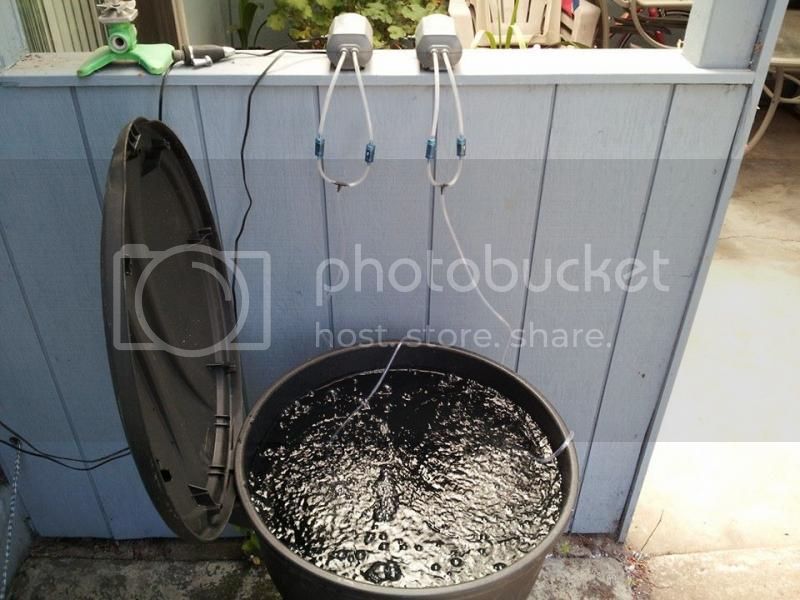so the article from the website says adding the brew to 4:1 ratio your not diluting it but spreading the bacteria out more.miguelovic said:Maybe? Definitely XD
I start off by saying this is just what I do, you can take it or leave it. Like I said, you can brew with a stick and a bucket, and it's very unlikely anything negative will happen.
Ehhh.. here's the stickler details. Math above is wrong, I add another pump to run 2 or so gallons.
A (my) 40 gallon tank pump produces 1.31 litre per minute. Make and model will vary, it isn't hard to track down numbers.
1.31 litre per minute = .046CFM, rounded to 0.05, because we're going to keep it simple.
So, a gallon on the low end of Wilsons recommendation. I have another pump with 2-3 times that capacity, and run 2-3 gallons at a time.
Do you have to do it this way? Nope. Is it really that complicated? A little math never turned me off. Complete opposite, I get a rager for long division. But it ties in to a point I've tried to make a few times in regards to AACT.
And now for something laced with smartass. If it wasen't, would'ya really believe it was me? XD
There are people that have conducted innumerable brews, varying from one to thousands of gallons, with a range of brewer styles, and quantified their experiences with fancy machines. Science-y equipment, you might say. They have thoughtfully recorded their results, and made their findings available to the everyone. If you follow their general guidelines, you will get an approximately equal result. As Celtic has correctly pointed out in the main thread, two brews with similar equipment and ingredients, are not going to give the exact same result. This isn't an exact science, but with a few simple, or so I thought, guidelines/parameters, one can achieve good result without remaking others past mistakes.
Enter DO2.
The optimum results achieved by said benevolent tea brewers, have provided some thumb rulers for other people to use. One of them is to pump an average of .05 - .08 CFM of air volume into your brewer, to achieve the "prime" of 6-10 PPM DO2.
Is having a little less oxygen in your brew going to kill your plants? Doubtful. Kind of a strange benchmark for whether an idea or course of action is successful or not, but that's probably just my way of thinking.
Hell, I've spent more time writing about this than I did doing the original calculations for myself. That ain't keeping it simple smartass. Gotta stop ranting one of these days XD
so is it better to do say 5G with 180 pump over doing four 5G with four 45g pumps?


